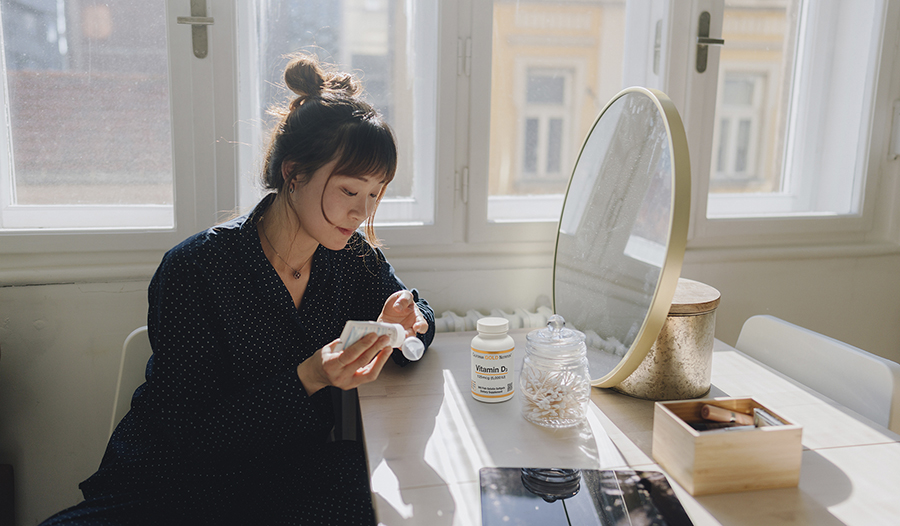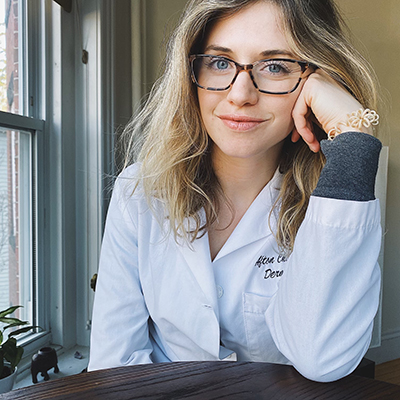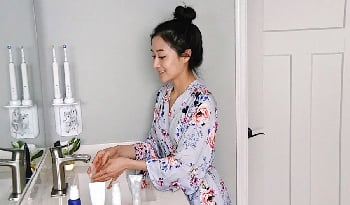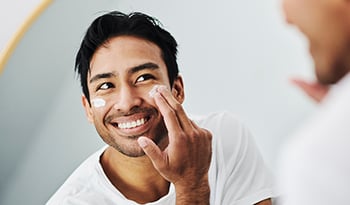Why a Dermatologist Prioritizes Sleep, a Healthy Diet, Vitamin D, and Exercise Daily
DISCLAIMER:This blog does not intend to provide diagnosis...

We are all just doing the best we can.
Many of us are striving to improve our habits and behaviors to optimize our wellness. Personally, I think about what I need to do to become the healthiest and happiest version of myself almost every day. This mindset tends to become accentuated during times of transition—like the new year, a birthday, or after a change in jobs or location.
These moments of reassessing our goals and progress are crucial for fostering growth and change within ourselves. Over the years, I’ve come up with several wellness habits that I’ve honed, tweaked, failed, and succeeded at. So, if you are in a rut, or if you are simply making some maintenance changes in your lifestyle, read on.
Sleep, exercise, diet, and vitamin D are some of the key ingredients in my personal wellness routine. These may sound obvious, but I’ll detail how I approach each consideration—and since this is a dermatology blog, I’ll focus on explaining how each of these behaviors affects the health of our skin.
Sleep
The first component of my wellness routine is sleep. I try to go to bed around 9:30 p.m. and wake up around 5:30 a.m. every day.
Healthy sleep that helps you look, feel, and perform your best isn’t only about how many hours of deep sleep you get—it’s also about the regularity of your sleep-wake cycle. Developing consistency in when you go to bed and when you wake up can help your body establish a normal circadian rhythm and optimize cortisol fluctuations within your body throughout the day.
Lack of Sleep Shows Up on Your Skin
Lack of sleep is theorized to contribute to a “pro-inflammatory” state, which may worsen pruritus (itch) and inflammatory skin conditions like psoriasis. As you may have noticed, sleep deprivation can manifest in the facial skin as dark undereye circles, droopy, swollen eyelids, and down-turning corners of the mouth. One study even demonstrated that poor sleep quality was associated with decreased skin barrier function and increased transepidermal water loss (loss of the skin’s ability to stay hydrated).
My Healthy Sleep Habits
When I have trouble sleeping and establishing a sleep routine, I take a melatonin supplement (no later than 8 p.m.) to help me fall asleep and set my sleep cycle.
I use earplugs every night so that my brain isn’t subconsciously processing all the little sounds that occur throughout the night, and I wear a sleep eye mask. I also try to sleep on different sides of my body—laying on just one side can cause more wrinkles and subcutaneous tissue loss on the side of the face you’re sleeping on.
Exercise
One of the most important parts of my day is exercise. My goal each week is to do some form of exercise every day of the week—but sometimes life gets in the way, so I may only get in four or five days.
Some days I’ll do yoga, others I’ll do barre, run, take a virtual fitness class, or ski, depending on the season. The important thing is that I try to engage in some form of movement I enjoy.
Exercise Enhances Your Skin
Exercise enhances blood flow throughout the body, including the skin. As a result, it can have beneficial effects on wound healing. It also can improve your mood and your confidence, which is an important part of the overall “package” beyond simply having glowing skin.
I often incorporate electrolyte mixes into my water before or after workouts to stay well-hydrated. Maintaining good hydration can help plump up the skin, minimizing fine wrinkles.
Diet
Diet is the next key step in my skin-healthy wellness routine. I follow a primarily plant-based diet, with occasional chicken and seafood, similar to a Mediterranean diet. I drink a cup of coffee every day and enjoy a glass of red wine several days a week. I try to avoid processed foods, sugary foods that are high on the glycemic index, and red meat.
How Diet Affects Your Skin
Research suggests these dietary practices may improve longevity and help reduce inflammation within the body—so they may be less likely to contribute to skin diseases and aging. Evidence also points to an association between dairy (particularly skim milk) and high-glycemic foods and acne.
A Nutritious Start Leads to a Healthier Day
I usually start my mornings with a plant-based protein shake that’s loaded with vitamins and antioxidants to maximize my nutrition, especially when I’m working out a lot. The jury is still out on whether vitamin supplementation and oral antioxidants really make a difference or if they just get broken down in your gut—but I like using them because they make me feel healthier, which leads me to make other additional healthy choices throughout the day.
Vitamin D
As a dermatologist, I am religious with my sunscreen application. I use a moisturizer with SPF 30 or higher on my face and neck every morning. If I’m going to be outside, I wear hats, sunglasses, body sunscreen, or long-sleeved clothing.
Because I am so careful with my sun protection and because in the winter I am so covered up, I may be at higher risk of vitamin D deficiency. This is because though some of the vitamin D in our bodies comes from our diet, much of our vitamin D is synthesized in the skin in response to UV rays from sun exposure.
Certain characteristics put you at higher risk of vitamin D deficiency:
- Darker skin: The natural melanin pigment in darker skin blocks UV light.
- Fat malabsorption disorders: Because vitamin D is fat-soluble, people who aren’t able to absorb fat well also have decreased absorption of vitamin D.
- Certain medications: Some medications can affect vitamin D synthesis or degradation.
- Living farther from the equator: The sun is lower in the sky at high and low latitudes, which results in lower levels of UV rays.
- Older age: As we age, our bodies may become less efficient at making vitamin D from sun exposure.
My patients frequently say things to me like, “Doc, I need my vitamin D, that’s why I like to sunbathe,” or “I don’t wear sunscreen because I’m concerned about vitamin D deficiency.” My response is that, in reality, you only need about 15 minutes of sunlight a day to get the vitamin D you need.
Vitamin D Supplements—Safer Than the Sun
If you’re still worried about your vitamin D status, consider vitamin D supplements. Better yet, ask your doctor to check your vitamin D level to see if you are actually deficient, then get their professional recommendations on what dose you’d need to replenish it.
Currently, there is quite a bit of controversy regarding what the appropriate “normal” level of vitamin D is. But here’s what we do know—UV radiation from the sun is carcinogenic, so supplementation is a safer way to get your vitamin D than from the sun. That’s why in addition to my normal daily sun protection, I regularly supplement with vitamin D as part of my wellness routine.
Takeaway
So, there you have it. The key parts of my dermatologist wellness routine are sleep, exercise, diet, and vitamin D. Each of these is critical, not only to how I feel but also to the health of my skin. Consider prioritizing these simple, yet profound, behaviors as you examine and enhance your own wellness journey!

 By Dr. Afton (Chavez) Cobb M.D., F.A.A.D.
By Dr. Afton (Chavez) Cobb M.D., F.A.A.D.


